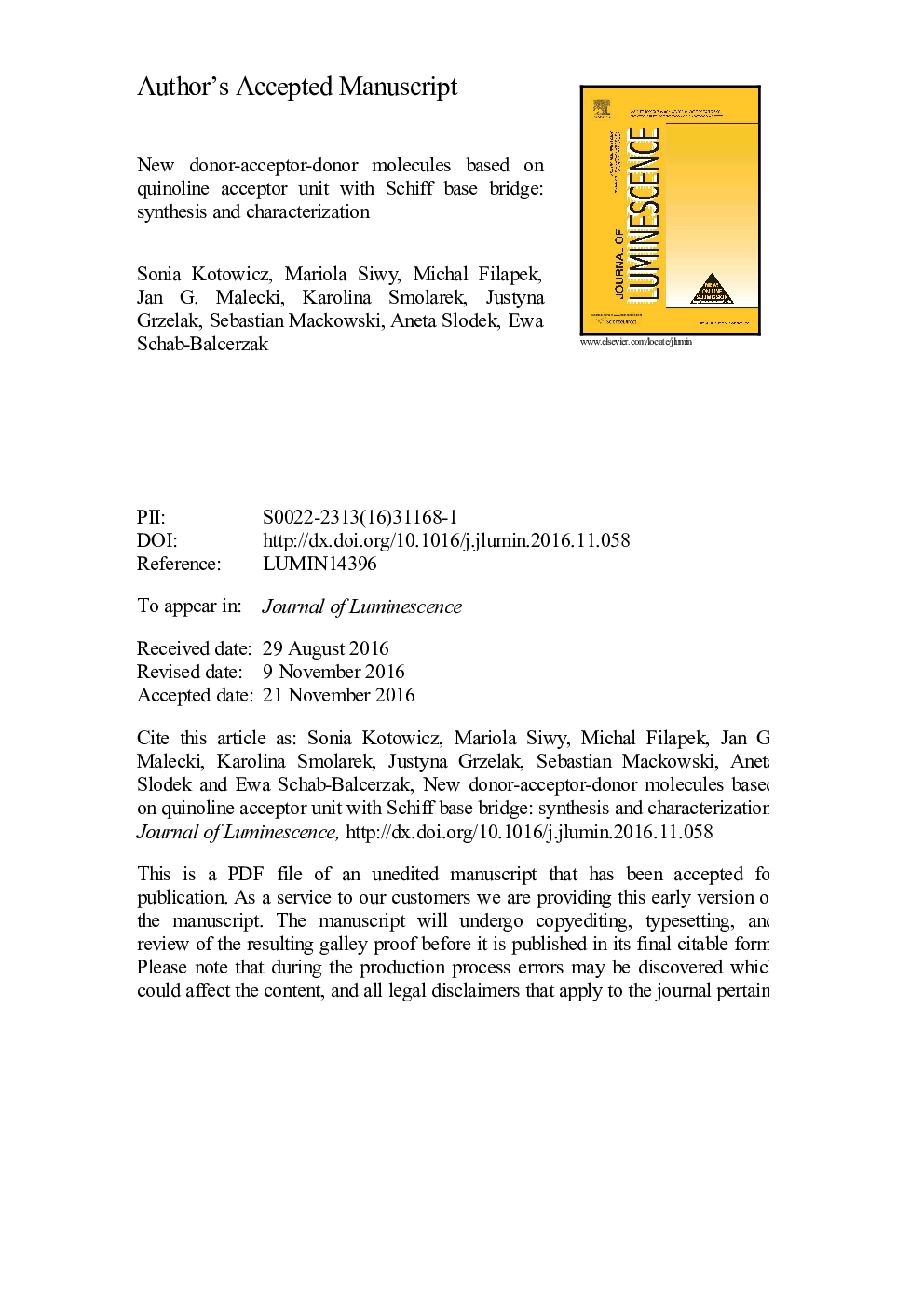| Article ID | Journal | Published Year | Pages | File Type |
|---|---|---|---|---|
| 5397708 | Journal of Luminescence | 2017 | 34 Pages |
Abstract
Three solution-processable small organic molecules bearing quinoline as electron-accepting moiety were synthesized via condensation reaction of novel 6-amino-2-(2,2'-bithiophen-5-yl)-4-phenylquinoline with 2,2'-bithiophene-5-carboxaldehyde, 9-ethyl-9H-carbazole-3-carbaldehyde and 9-phenanthrenecarboxaldehyde. The presence of alternating electron-donating and accepting units results in a donor-acceptor-donor architecture of these molecular systems. Thermal, photophysical, and electrochemical properties of these small molecules were examined and the experimental results were supported by the density functional theory calculations. The obtained molecular systems exhibited high thermal stability with decomposition temperatures (5% weight loss) exceeding 330 °C in nitrogen atmosphere. It was found, based on DSC measurements, that investigated Schiff bases form amorphous material with glass transition temperatures between 88 and 190 °C. They also showed a UV-vis absorption in the range of 250-500 nm both in solution and in solid state as film and blend with PMMA and PVK. Photoluminescence measurements revealed moderately strong blue-light emission of the imines in solution as well as in PMMA blend with quantum yields in the range of 2-26%. In the case of imines dispersed in PVK matrix the emission of green light was mainly observed. In addition, when mixed with plasmonically active silver nanowires, the compounds exhibit relatively strong electroluminescence signal, associated with plasmonics enhancement, as evidenced by high-resolution photoluminescence imaging. The energy band gap estimated based on cyclic voltammetry was between 2.38 and 2.61 eV.
Related Topics
Physical Sciences and Engineering
Chemistry
Physical and Theoretical Chemistry
Authors
Sonia Kotowicz, Mariola Siwy, Michal Filapek, Jan G. Malecki, Karolina Smolarek, Justyna Grzelak, Sebastian Mackowski, Aneta Slodek, Ewa Schab-Balcerzak,
